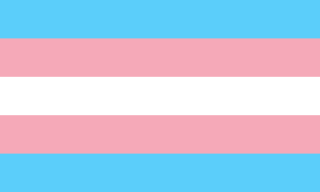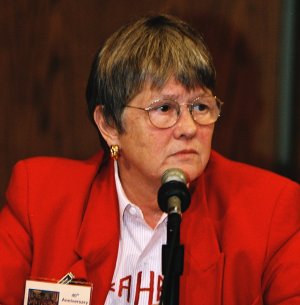
The Equal Pay Act of 1963 is a United States labor law amending the Fair Labor Standards Act, aimed at abolishing wage disparity based on sex. It was signed into law on June 10, 1963, by John F. Kennedy as part of his New Frontier Program. In passing the bill, Congress stated that sex discrimination:

The Civil Rights Act of 1991 is a United States labor law, passed in response to United States Supreme Court decisions that limited the rights of employees who had sued their employers for discrimination. The Act represented the first effort since the passage of the Civil Rights Act of 1964 to modify some of the basic procedural and substantive rights provided by federal law in employment discrimination cases. It provided the right to trial by jury on discrimination claims and introduced the possibility of emotional distress damages and limited the amount that a jury could award. It added provisions to Title VII of the Civil Rights Act of 1964 protections expanding the rights of women to sue and collect compensatory and punitive damages for sexual discrimination or harassment.
Pregnancy discrimination is a type of employment discrimination that occurs when expectant women are fired, not hired, or otherwise discriminated against due to their pregnancy or intention to become pregnant. Common forms of pregnancy discrimination include not being hired due to visible pregnancy or likelihood of becoming pregnant, being fired after informing an employer of one's pregnancy, being fired after maternity leave, and receiving a pay dock due to pregnancy. Pregnancy discrimination may also take the form of denying reasonable accommodations to workers based on pregnancy, childbirth, and related medical conditions. Pregnancy discrimination has also been examined to have an indirect relationship with the decline of a mother's physical and mental health. Convention on the Elimination of All Forms of Discrimination against Women prohibits dismissal on the grounds of maternity or pregnancy and ensures right to maternity leave or comparable social benefits. The Maternity Protection Convention C 183 proclaims adequate protection for pregnancy as well. Though women have some protection in the United States because of the Pregnancy Discrimination Act of 1978, it has not completely curbed the incidence of pregnancy discrimination. The Equal Rights Amendment could ensure more robust sex equality ensuring that women and men could both work and have children at the same time.

The Pregnancy Discrimination Act (PDA) of 1978 is a United States federal statute. It amended Title VII of the Civil Rights Act of 1964 to "prohibit sex discrimination on the basis of pregnancy."
Employment discrimination is a form of illegal discrimination in the workplace based on legally protected characteristics. In the U.S., federal anti-discrimination law prohibits discrimination by employers against employees based on age, race, gender, sex, religion, national origin, and physical or mental disability. State and local laws often protect additional characteristics such as marital status, veteran status and caregiver/familial status. Earnings differentials or occupational differentiation—where differences in pay come from differences in qualifications or responsibilities—should not be confused with employment discrimination. Discrimination can be intended and involve disparate treatment of a group or be unintended, yet create disparate impact for a group.
Disparate impact in the law of the United States refers to practices in employment, housing, and other areas that adversely affect one group of people of a protected characteristic more than another, even though rules applied by employers or landlords are formally neutral. Although the protected classes vary by statute, most federal civil rights laws consider race, color, religion, national origin, and sex to be protected characteristics, and some laws include disability status and other traits as well.
Employment discrimination law in the United States derives from the common law, and is codified in numerous state, federal, and local laws. These laws prohibit discrimination based on certain characteristics or "protected categories". The United States Constitution also prohibits discrimination by federal and state governments against their public employees. Discrimination in the private sector is not directly constrained by the Constitution, but has become subject to a growing body of federal and state law, including the Title VII of the Civil Rights Act of 1964. Federal law prohibits discrimination in a number of areas, including recruiting, hiring, job evaluations, promotion policies, training, compensation and disciplinary action. State laws often extend protection to additional categories or employers.

Ledbetter v. Goodyear Tire & Rubber Co., 550 U.S. 618 (2007), is an employment discrimination decision of the Supreme Court of the United States. Employers cannot be sued under Title VII of the Civil Rights Act of 1964 over race or gender pay discrimination if the claims are based on decisions made by the employer 180 days ago or more. Justice Alito held for the five-justice majority that each paycheck received did not constitute a discrete discriminatory act, even if it was affected by a prior decision outside the time limit. Ledbetter's claim of the “paycheck accrual rule” was rejected. The decision did not prevent plaintiffs from suing under other laws, like the Equal Pay Act, which has a three-year deadline for most sex discrimination claims, or 42 U.S.C. 1981, which has a four-year deadline for suing over race discrimination.

Occupational sexism is discrimination based on a person's sex that occurs in a place of employment.
St. Mary's Honor Center v. Hicks, 509 U.S. 502 (1993), was a US labor law case before the United States Supreme Court on the burden of proof and the relevance of intent for race discrimination.
Texas Department of Community Affairs v. Burdine, 450 U.S. 248 (1981), is a United States labor law case of the United States Supreme Court.
Disparate treatment is one kind of unlawful discrimination in US labor law. In the United States, it means unequal behavior toward someone because of a protected characteristic under Title VII of the United States Civil Rights Act. This contrasts with disparate impact, where an employer applies a neutral rule that treats everyone equally in form, but has a disadvantageous effect on some people of a protected characteristic compared to others.
"Mixed motive" discrimination is a category of discrimination under Title VII of the Civil Rights Act of 1964.

LGBT employment discrimination in the United States is illegal under Title VII of the Civil Rights Act of 1964; employment discrimination on the basis of sexual orientation or gender identity is encompassed by the law's prohibition of employment discrimination on the basis of sex. Prior to the landmark cases Bostock v. Clayton County and R.G. & G.R. Harris Funeral Homes Inc. v. Equal Employment Opportunity Commission (2020), employment protections for LGBT people were patchwork; several states and localities explicitly prohibit harassment and bias in employment decisions on the basis of sexual orientation and/or gender identity, although some only cover public employees. Prior to the Bostock decision, the Equal Employment Opportunity Commission (EEOC) interpreted Title VII to cover LGBT employees; the EEOC determined that transgender employees were protected under Title VII in 2012, and extended the protection to encompass sexual orientation in 2015.

Jespersen v. Harrah's Operating Co., 444 F.3d 1104 was a United States federal employment law sex discrimination case.

Ann Hopkins was an American business manager who was the plaintiff in the landmark American employment discrimination case Price Waterhouse v. Hopkins.
Johnson v. Transportation Agency, 480 U.S. 616 (1987), is the only United States Supreme Court case to address a sex-based affirmative action plan in the employment context. The case was brought by Paul Johnson, a male Santa Clara Transportation Agency employee, who was passed over for a promotion in favor of Diane Joyce, a female employee who Johnson argued was less qualified. The Court found that the plan did not violate the protection against discrimination on the basis of sex in Title VII of the Civil Rights Act of 1964.
Altitude Express, Inc. v. Zarda, 590 U.S. ___ (2020), is a landmark United States Supreme Court civil rights case which ruled that under Title VII of the Civil Rights Act of 1964 employees could not be discriminated against on the basis of sexual orientation or gender identity.
R.G. & G.R. Harris Funeral Homes Inc. v. Equal Employment Opportunity Commission, 590 U.S. ___ (2020), is a landmark United States Supreme Court case which ruled that Title VII of the Civil Rights Act of 1964 protects transgender people from employment discrimination.
Bostock v. Clayton County, 590 U.S. 644 (2020), is a landmark United States Supreme Court civil rights decision in which the Court held that Title VII of the Civil Rights Act of 1964 protects employees against discrimination because of sexuality or gender identity.






